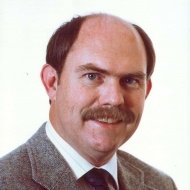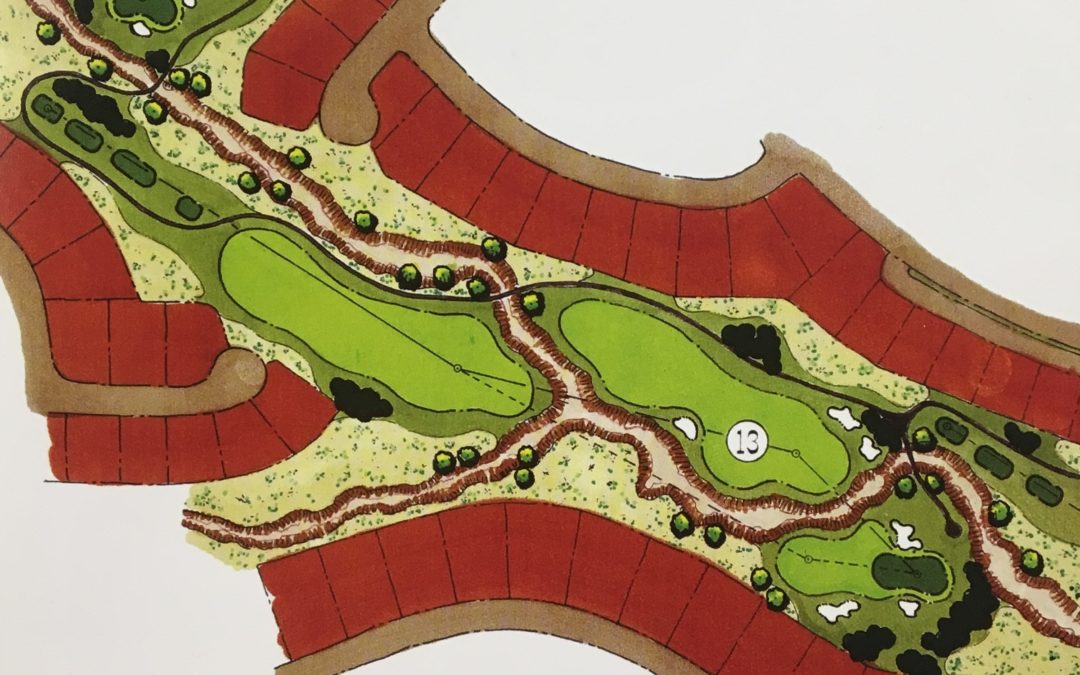Mark Rathert, a Kansas State graduate, is based in Greenwood Village, Colorado, and designed courses worldwide and domestically in Boulder Creek Golf Club in Boulder City, Nevada; Kissing Camels Golf Club in Colorado Springs, Colorado;  Prairie Falls Golf Club in Post Falls, Idaho; Gainey Ranch Golf Course in Scottsdale, Arizona; and Indian Creek Golf Course in Elkhorn, Nebraska. He has also remodeled and renovated courses including Sharon Heights Country Club in Menlo Park, California; Broadmoor Golf Resort in Colorado Springs, Colorado; and Hayden Lake Country Club in Hayden Lake, Idaho.
Prairie Falls Golf Club in Post Falls, Idaho; Gainey Ranch Golf Course in Scottsdale, Arizona; and Indian Creek Golf Course in Elkhorn, Nebraska. He has also remodeled and renovated courses including Sharon Heights Country Club in Menlo Park, California; Broadmoor Golf Resort in Colorado Springs, Colorado; and Hayden Lake Country Club in Hayden Lake, Idaho.
In the mid 1980s we were very busy doing projects in Japan. We discovered cultural differences as soon as the projects progressed.
Typically, most golf projects required that as many as three hundred property owners agree to sell their land in order for enough property to be obtained to construct a golf course. Approval processes, because they were complicated and time-consuming, would often take place prior to securing all of the land. But there were always some landowners who held out for more money, so the golf course routing was constantly being changed to work around these pieces of property.
What further complicated this design work was that most of the sites were in mountainous areas of Japan. Farmland was rarely used for a golf course, so massive amounts of earth needed to be moved in order to flatten out areas for the golf holes. That, too, was not always easy due to approval restrictions. These restrictions dictated how much area on a site could be disturbed and required storm water be retained before being released on to adjacent farmland.
Culturally speaking, doing business in Japan was quite different than working in the United States because each golf course developer hired large engineering firms to get the approvals. Consequently, the engineering firms developed golf course plans suitable to obtain the approval. After the preliminary approval for the project was given, the owners would hire a foreign golf course architect. I remember one project required the routing to be changed fifteen times before the owner finally secured all the property and final approvals to construct the course.
Getting the project engineers to then accept our design concept was another story. Typically they had some reason they wouldn’t be able to do it our way. It was only after working on three or four Japanese projects that I realized their disagreements with our ideas were usually more business-based on their part: the owner had negotiated a lump sum price with them to construct the course before hiring us. The owners often told us to make the course magnificent: that money was no object. But that wasn’t really true. It took a tremendous amount of patience and persistence to get the course constructed our way.
Developing trust with both the client and the engineering firm was critical for success. Having the professional skill set to be able to sit in a hotel room or site office and design or revise a grading plan was critical. In order to keep the machines running, I often had to quickly redesign the plan and recalculate the earthwork quantities. This ability went a long way in perpetuating their trust and confidence in my abilities.

